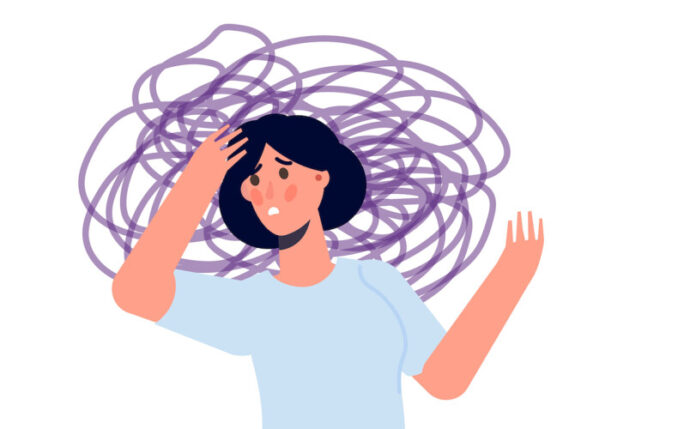Many people suffer from an unusual fear or two. Spiders can cause you to feel heebie-jeebies. The chest could tighten when the aircraft you’re riding takes off along the runway.
Sometimes, having to confront these anxieties can trigger an array of anxiety-related symptoms, including:
sweaty palms
An increase in heart rate.
Quick breathing
Phobias make these symptoms more noticeable more.
A majority of people with phobias specific to them define their symptoms as light. Another half of them say that the symptoms range from moderate to severe. Sometimes, contemplating the cause of a fear can trigger an anxiety surge.
Some people’s anxiety caused by their fear is so overwhelming that they have to spend a lot of time and energy trying to avoid triggers. Sometimes, their avoidance causes problems with their personal relationships as well as their work.
If you’re having trouble focusing on certain activities or are finding that physical manifestations of fear are disrupting your day-to-day life, it’s time to think about therapy.
A few of the most frequent fears are fear of:
flying
heights spiders
enclosed spaces
blood
snakes
water
being alone
The good news is psychotherapy is generally effective in dealing with anxiety disorders. Here are some strategies worth considering.
Exposure therapy
The process of exposure therapy is a form of therapy that focuses on behavior therapy. In this form of treatment the therapist will usually begin with a program to teach you techniques to relax the mind when you’re feeling extreme stress.
Another method of the exposure therapy involves systematic de-sensitization. This involves gradually exposing yourself to fear-inducing situations, from the least frightening to the most frightening.
Once you’ve learned to soothe yourself during stressful times You and your therapist can create an order of events that are related to your fears. The most frightening ones should be in the lower levels and the most frightening ones on top.
The process of exposure therapy is a method to gradually bring you closer to what you are afraid of. It is usually started in your mind, and later through various forms, such as cartoons, drawings or even photographs.
As you approach each your therapist guides you through using your relaxation techniques to ease your nerves.
If you are able to defuse the anxiety that is related to a particular type of representation the therapist and you are able to move on to the next stage of your ladder.
The aim is to gradually de-sensitize your body to the particular anxiety, so that it doesn’t trigger the same symptoms, and it doesn’t get out of the way of living life to the maximum.
Cognitive behavior therapy
The cognitive behavior therapy (CBT) often includes the same desensitization techniques that are used for exposure therapy. CBT is also focused on specific beliefs and thoughts you associate with fears.
People who have phobias often have created thought patterns regarding the fear, but they do not reflect reality.
For instance, when you are confronted with a particular anxiety, you may tend to fear the worst (imagine the worst that could happen). This could increase your anxiety.
CBT assists you in identifying mental distortions . These are thoughts that aren’t helpful which aren’t accurate. Once you’ve identified the thoughts they can be replaced with more precise ones.
If you’re caught in the fearful trance of a frightening incident, CBT can help you:
Remind yourself that you’re suffering from fear
Remember that the show is coming to an end
be aware of the thoughts that are increasing your fear
Replace the false thoughts by stating facts that are more real
Mindfulness-based training
Mindfulness practices can help lower the amount of stress that you feel. The technique won’t end the initial surge of anxiety that fear will release, but mindful training can help reduce the impact of your anxiety.
It might be a good idea to collaborate with an therapist to master mindfulness techniques. Practice them regularly at your own pace will help you apply the techniques when confronted with a fear.
Here are some techniques for mindfulness that could be beneficial:
meditation
deep breath progressive relaxation of the muscles
In a tiny study conducted in 2010, according to Trusted Source mindfulness-based techniques paired together with cognitive behavior therapy helped participants overcome social phobia symptoms over the long run.
Recent research has revealed the benefits of mindfulness practices when employed in conjunction with exposure therapy to reduce the negative effects of anxiety.
A list of books for the little children who are afraid of big things.
Phobias can be experienced by individuals from all ages, not just young children. If you know someone with a fear The following books can be useful.
There are many practical issues to ask (Is the therapist on my insurance provider’s network? What is the distance between the office of the therapist?) or personal preferences regarding gender, communication style, or the importance of cultural awareness.
If you look for an therapist who can help you with your fear You may wish to locate a professional who has been well-trained and skilled in cognitive behavior therapy and exposure therapy specifically.
It is essential to make certain that your therapist has the right license and licensed to work in the country in which you reside.
Treatment of phobias can take time, so you should be ready to put a few months or weeks into the treatment process.
